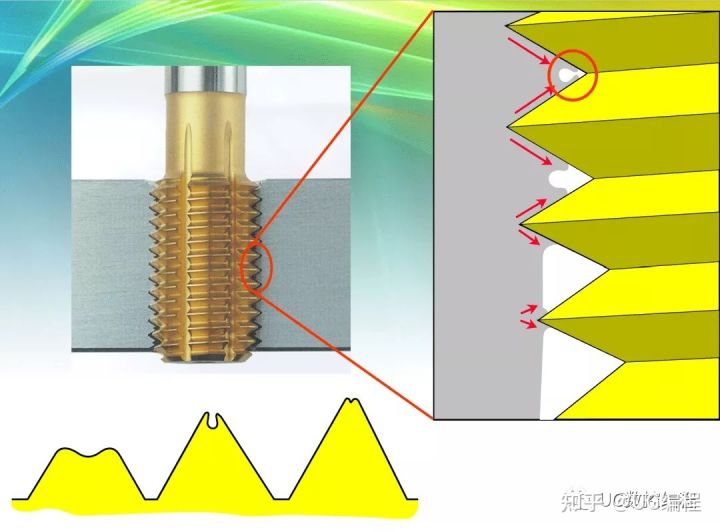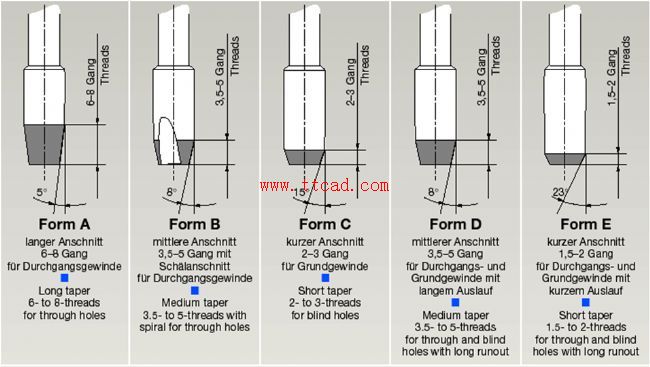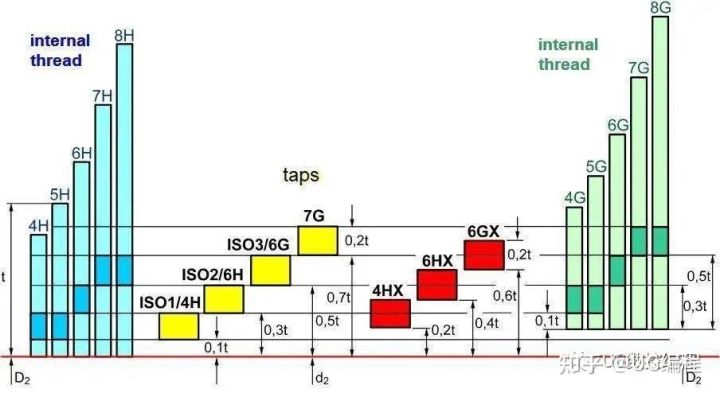As a common tool for processing internal threads, taps can be divided into spiral groove taps, edge inclination taps, straight groove taps and pipe thread taps according to their shapes, and can be divided into hand taps and machine taps according to the use environment. Divided into metric, American, and imperial taps. Are you familiar with them all?
01 Tap classification
(1) Cutting taps
1) Straight flute tap: used for the processing of through holes and blind holes, iron chips exist in the tap groove, the quality of the processed thread is not high, and it is more commonly used for the processing of short chip materials, such as gray cast iron, etc.
2) Spiral groove tap: used for blind hole processing with hole depth less than or equal to 3D, iron filings are discharged along the spiral groove, and the thread surface quality is high.
10~20° helix angle tap can process thread depth less than or equal to 2D;
28~40° helix angle tap can process thread depth less than or equal to 3D;
The 50° helix angle tap can process the thread depth less than or equal to 3.5D (special working condition 4D).
In some cases (hard materials, large pitch, etc.), in order to obtain better tooth tip strength, a helical flute tap is used to machine through holes.
3) Spiral point tap: usually only used for through holes, the length-diameter ratio can reach 3D~3.5D, the iron chips are discharged downward, the cutting torque is small, and the surface quality of the machined thread is high, also known as the edge angle tap or apex tap.
When cutting, it is necessary to ensure that all cutting parts are penetrated, otherwise tooth chipping will occur.
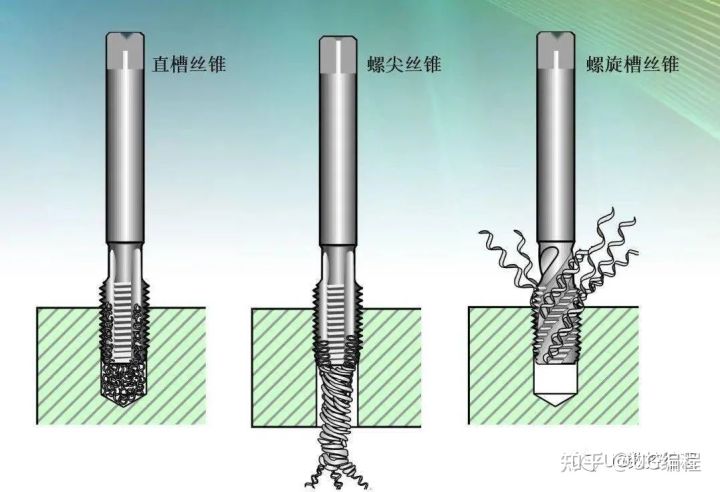
(2) Extrusion tap
It can be used for the processing of through holes and blind holes, and the tooth shape is formed by plastic deformation of the material, which can only be used for processing plastic materials.
Its main features:
1) Use the plastic deformation of the workpiece to process the thread;
2) The cross-sectional area of the tap is large, the strength is high, and it is not easy to break;
3) The cutting speed can be higher than that of cutting taps, and the productivity is also increased accordingly;
4) Due to the cold extrusion process, the mechanical properties of the processed thread surface are improved, the surface roughness is high, and the thread strength, wear resistance and corrosion resistance are improved;
5) Chipless machining.
Its shortcomings are:
1) can only be used to process plastic materials;
2) The manufacturing cost is high.
There are two structural forms:
1) Extrusion taps without oil grooves are only used for vertical machining of blind holes;
2) Extrusion taps with oil grooves are suitable for all working conditions, but usually small diameter taps do not design oil grooves due to manufacturing difficulties.
(1) Dimensions
1) Overall length: Pay attention to some working conditions that require special lengthening
2) Slot length: pass up
3) Shank: At present, the common shank standards are DIN (371/374/376), ANSI, JIS, ISO, etc. When selecting, pay attention to the matching relationship with the tapping shank
(2) Threaded part
1) Accuracy: It is selected by the specific thread standard. The metric thread ISO1/2/3 level is equivalent to the national standard H1/2/3 level, but it is necessary to pay attention to the manufacturer's internal control standards.
2) Cutting tap: The cutting part of the tap has formed a part of the fixed pattern. Generally, the longer the cutting tap, the better the life of the tap.
3) Correction teeth: It plays the role of auxiliary and correction, especially in the unstable condition of the tapping system, the more correction teeth, the greater the tapping resistance.
(3) Chip flutes
1. Groove type: It affects the forming and discharge of iron filings, which is usually an internal secret of each manufacturer.
2. Rake angle and relief angle: when the tap is increased, the tap becomes sharp, which can significantly reduce the cutting resistance, but the strength and stability of the tooth tip decrease, and the relief angle is the relief angle.
3. The number of grooves: the number of grooves increases and the number of cutting edges increases, which can effectively improve the life of the tap; but it will compress the chip removal space, which is not good for chip removal.
03 Tap material and coating
(1) The material of the tap
1) Tool steel: It is mostly used for hand incisor taps, which is not common at present.
2) Cobalt-free high-speed steel: Currently, it is widely used as tap material, such as M2 (W6Mo5Cr4V2, 6542), M3, etc., and the marking code is HSS.
3) Cobalt-containing high-speed steel: currently widely used as tap materials, such as M35, M42, etc., the marking code is HSS-E.
4) Powder metallurgy high-speed steel: Used as a high-performance tap material, the performance is greatly improved compared with the above two. The naming methods of each manufacturer are also different, and the marking code is HSS-E-PM.
5) Cemented carbide materials: usually use ultra-fine particles and good toughness grades, which are mainly used to manufacture straight flute taps to process short chip materials, such as gray cast iron, high silicon aluminum, etc.
Taps are highly dependent on materials, and the selection of good materials can further optimize the structural parameters of the taps, making them suitable for high-efficiency and harsher working conditions, and at the same time have a higher service life. At present, large tap manufacturers have their own material factories or material formulas. At the same time, due to the problems of cobalt resources and prices, new cobalt-free high-performance high-speed steels have also come out.
(2) Coating of the tap
1) Steam oxidation: The tap is placed in high-temperature water vapor to form an oxide film on the surface, which has good adsorption to the coolant, can reduce friction, and prevent the tap and the material to be cut. Suitable for machining mild steel.
2) Nitriding treatment: The surface of the tap is nitrided to form a surface hardened layer, which is suitable for machining cast iron, cast aluminum and other materials that have great tool wear.
3) Steam + Nitriding: Combine the advantages of the above two.
4) TiN: golden yellow coating, with good coating hardness and lubricity, and good coating adhesion, suitable for processing most materials.
5) TiCN: blue-gray coating with a hardness of about 3000HV and a heat resistance of 400°C.
6) TiN+TiCN: dark yellow coating, with excellent coating hardness and lubricity, suitable for processing most materials.
7) TiAlN: blue-gray coating, hardness 3300HV, heat resistance up to 900°C, can be used for high-speed machining.
8) CrN: silver-gray coating, excellent lubricating performance, mainly used for processing non-ferrous metals.
The influence of the coating of the tap on the performance of the tap is very obvious, but at present, most manufacturers and coating manufacturers cooperate with each other to study special coatings.
04 Elements Affecting Tapping
(1) Tapping equipment
1) Machine tool: It can be divided into vertical and horizontal processing methods. For tapping, vertical processing is better than horizontal processing. When external cooling is performed in horizontal processing, it is necessary to consider whether the cooling is sufficient.
2) Tapping tool holder: It is recommended to use a special tapping tool holder for tapping. The machine tool is rigid and stable, and the synchronous tapping tool holder is preferred. On the contrary, the flexible tapping tool holder with axial/radial compensation should be used as much as possible. . Except for small diameter taps (<M8), use the square body drive as much as possible. 3) Cooling conditions: For tapping, especially for extrusion taps, the requirement for coolant is lubrication > cooling; in actual use, it can be adjusted according to machine conditions (when using emulsion, the recommended concentration is greater than 10%).
(2) Workpieces
1) The material and hardness of the workpiece: the hardness of the workpiece material should be uniform, and it is generally not recommended to use a tap to process workpieces exceeding HRC42.
2) Tapping bottom hole: bottom hole structure, select the appropriate drill bit; bottom hole size accuracy; bottom hole hole wall quality.
(3) Processing parameters
1) Rotational speed: The basis of the given rotation speed is the type of tap, material, material to be processed and hardness, the quality of tapping equipment, etc.
Usually selected according to the parameters given by the tap manufacturer, the speed must be reduced under the following conditions:
- poor machine rigidity; large tap runout; insufficient cooling;
- uneven material or hardness in the tapping area, such as solder joints;
- the tap is lengthened, or an extension rod is used;
- Recumbent plus, outside cooling;
- Manual operation, such as bench drill, radial drill, etc.;
2) Feed: rigid tapping, feed = 1 thread pitch/revolution.
In the case of flexible tapping and sufficient shank compensation variables:
Feed = (0.95-0.98) pitches/rev.
05 Tips for the selection of taps
(1) Tolerance of taps of different precision grades
Selection basis: the accuracy grade of the tap cannot be selected and determined only according to the accuracy grade of the thread being machined
1) The material and hardness of the workpiece to be processed;
2) Tapping equipment (such as machine tool conditions, clamping tool holders, cooling rings, etc.);
3) The accuracy and manufacturing error of the tap itself.
For example, when processing 6H threads, when processing steel parts, 6H precision taps can be used; when processing gray cast iron, because the middle diameter of the taps wears quickly and the expansion of the screw holes is small, it is better to use 6HX precision taps. Tap, life will be better.
A note on the accuracy of Japanese taps:
1) The cutting tap OSG uses the OH precision system, which is different from the ISO standard. The OH precision system forces the width of the entire tolerance band to start from the lowest limit, and every 0.02mm is used as a precision grade, named OH1, OH2, OH3, etc.;
2) The extrusion tap OSG uses the RH precision system. The RH precision system forces the width of the entire tolerance band to start from the lower limit, and each 0.0127mm is used as an accuracy level, named RH1, RH2, RH3, etc.
Therefore, when using ISO precision taps to replace OH precision taps, it cannot be simply considered that 6H is approximately equal to OH3 or OH4 grade. It needs to be determined by conversion, or according to the actual situation of the customer.
(2) Dimensions of the tap
1) The most widely used ones are DIN, ANSI, ISO, JIS, etc.;

2) It is allowed to choose the appropriate overall length, blade length and shank size according to different processing requirements of customers or existing conditions;
3) Interference during processing;
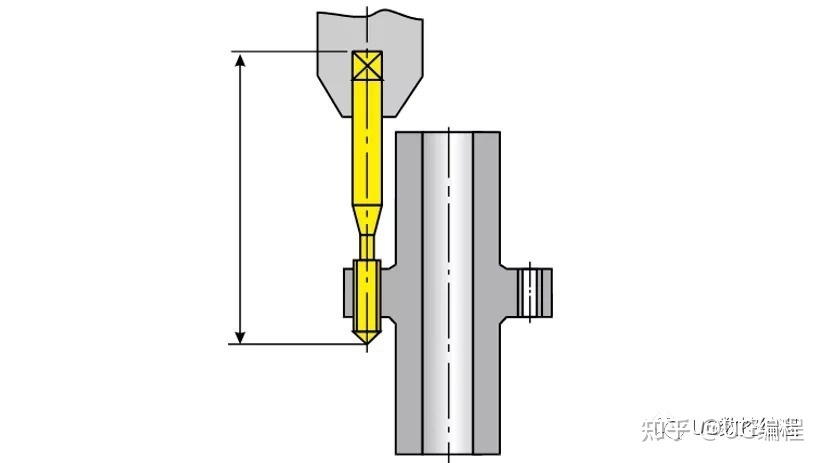
(3) 6 basic elements for tap selection
1) The type of processing thread, metric, inch, American, etc.;
2) The type of threaded bottom hole, through hole or blind hole;
3) The material and hardness of the workpiece to be processed;
4) The depth of the complete thread of the workpiece and the depth of the bottom hole;
5) The required accuracy of the workpiece thread;
6) The shape standard of the tap
Post time: Jul-20-2022
